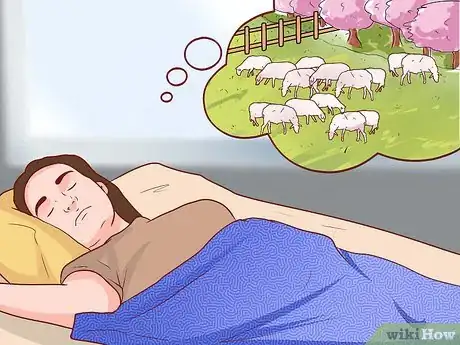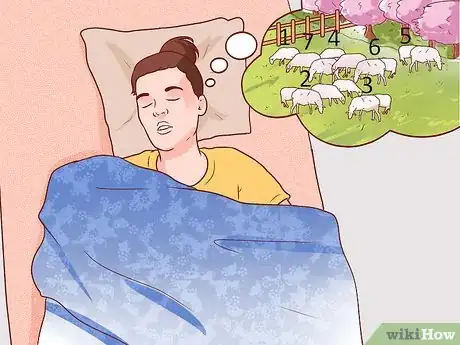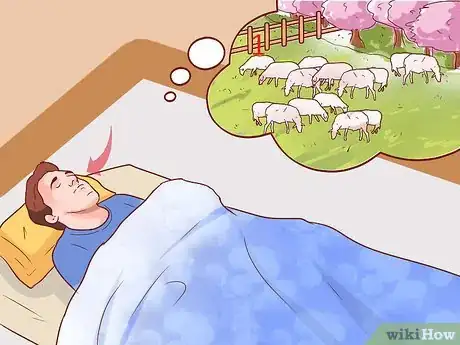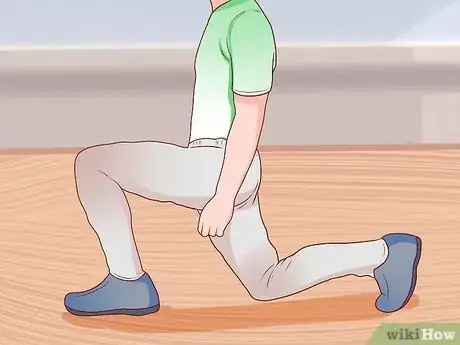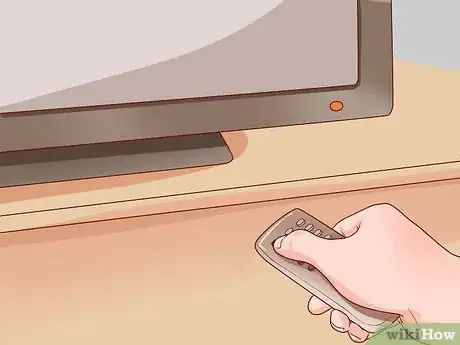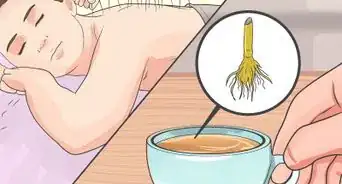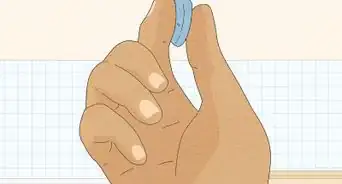This article was co-authored by Chad Denman. Dr. Chad Denman is a Sleep Medicine Provider and is the Owner of Sleep Cycle Center in Austin, TX. With over ten years of experience and over 500 hours of Continuing Education in Sleep, he specializes in identifying and offering multiple treatment options to patients suffering from sleep issues. Additionally, he previously treated patients as a general dentist for over a decade! Dr. Denman completed his Doctor of Dental Surgery degree at Marquette University and earned an undergraduate degree in Exercise Physiology from Florida State University. He’s also a member of the American Academy of Sleep Medicine (AASM), the American Dental Association, and the Academy of General Dentistry. In addition, Dr. Chad is the Director of Doctor Success for the International Academy of Sleep (IAOS). There, he coaches other dentists on how they can become healthcare entrepreneurs and lectures nationwide on the importance of treating sleep apnea.
This article has been viewed 282,330 times.
Has a loved one ever told you to "count your sheep" before you go to bed? Believe it or not, counting sheep isn't something they made up! This sleep theory has been around for centuries, and some say it's a helpful trick that makes them fall asleep faster. In this step-by-step guide, we'll teach you everything you need to know about how to count sheep (plus, we'll throw in some extra sleeping tips, just for fun).
Steps
Counting Sheep in Bed
-
1Close your eyes and visualize a field with a long fence. This field is the spot where the sheep graze. The field could be very green, with lots of grass. The fence may be white or another color of your choosing.
- You may also want to picture the sky and the area surrounding the field, such as trees, a country road, and clouds hovering above the field.
-
2Picture a herd of sheep in a field. These are the sheep you are going to count as a way to help you fall asleep. Often, sheep are depicted as white with curly hair, four legs, and a tail.Advertisement
-
3Begin to count the sheep. Once you have a herd of sheep in the field, start to count each one, beginning from “1”. You may want to picture the sheep jumping over the fence in the field and count each sheep as it jumps, or you may simply count the sheep at random.
- There is debate that this method of counting sheep encourages sleep, as it forces you to use your brain to count the sheep and keep track of them as they jump over the fence. Simply counting the sheep in the field may be a more effective way to help you fall asleep.[1]
-
4Do deep breathing as you count the sheep. Linking your breathing as you count the sheep could be a way to relax your body and ready yourself for sleep. As you count each sheep, take a deep breath in through your nose and as you move on to the next sheep, take a deep breath out through your nose. Continue to do this, making sure you inhale and exhale deeply as you count the sheep.
Using Other Sleep Techniques
-
1Do laying meditation and deep breathing. If you can't seem to get to sleep by counting sheep, you may want to try doing a meditation exercise that uses deep breathing as you lay on your back in bed. This can help to calm and relax you into a deep sleep.
- Start by inhaling and exhaling deeply through your nose, breathing from your diaphragm, which is just under your ribs. As you inhale, think about relaxing all your muscles, from head to toe. As you exhale, imagine you are sinking deeper into your bed.
- Continue to do this, breathing deeply in and out. You may also want to imagine a calm, relaxing scene like a falling waterfall or a tropical beach to help calm your mind and body for rest.
-
2Try muscle clenching and releasing exercises. These exercises can help your body to relax and help you get to sleep faster. Clenching and releasing your muscles can act as a form of meditation.
- Begin by clenching your upper body, including your neck, your fingers, your hands, your arms, and your abdominals. Then, clench your lower body, including your legs, your feet, and your toes.
- Inhale as you clench all your muscles. Then, exhale and slowly release all of your muscles, relaxing your entire body. You should feel a sense of peace and calm as you release your muscles into your bed.
-
3Wear a sleep mask and ear plugs to bed. If you struggle with distractions around you at night, you may want to block out any light from the windows with a sleep mask. You can use a thin scarf or buy a sleep mask from your local drugstore.
- You may also want to use ear plugs to block out any noise around you. You can find soft, comfortable ear plugs at your local drugstore.
-
4Listen to music or to a sleep sound machine. If you are struggling to fall asleep, you may want to try to do a relaxing, quiet activity like listening to ambient music with headphones while you lay in bed. You can look up sleep mixes online that are designed to help your brain relax or create your own music mix using some of your favorite slow jams.
- Sleep sound machines are designed to help you get a full night's rest by using sleep sounds that you can customize to fit your ideal ambient sounds. Many of these machines have a loop cycle so the sleep sounds last all night long and continue to block out any outside noise that may keep you awake.[2]
-
5Consider taking sleeping pills. Sleeping pills can help you to fall sleep if counting sheep does not work and if you are struggling to get a good night's sleep. However, sleeping pills should only be a temporary solution to insomnia and restless sleep. Sleeping pills can often make your sleep issues work in the long term.[3]
- You should only use sleeping pills for short term situations, such as to recover from jet lag or from a medical procedure. You should avoid using sleeping pills on a regular basis, as you may end up dependent on sleeping pills to get to sleep every night.
-
6Avoid over-the-counter medications that can cause insomnia and sleep issues. The side effects of several over-the-counter medications can have adverse effects on your sleep pattern.Common medications that can disturb your sleep include:[4]
- Nasal decongestants.
- Cold and allergy medications containing an antihistamine.
- Aspirin and other headache medications.
- Pain relievers that contain caffeine.
- Try to reduce your dosage or avoid taking these medications completely. You can also try alternative methods to treat your medical issues so you do not have to take over-the-counter medications.
Preparing for Bed
-
1Turn off all electronics. To prepare your body and brain for bed, you should switch off all electronics such as your phone, your computer, or your television. The light that emits from the screens on these electronics can stimulate your brain and reduce your brain’s ability to produce melatonin, a substance that helps you to sleep. You should also avoid bringing any electronics into your bed with you, as it may be more difficult to shut them off or block them out when you are trying to sleep.
- Rather than go on your phone or your computer when you are lying in bed, choose to do a relaxing activity that does not involve electronics. For example, reading a good book, writing in your journal, or talking quietly to your partner.
-
2Make your bedroom cool, quiet, and comfy. Create a comfortable atmosphere to encourage sleep by ensuring your bedroom is not too hot and not near any loud noises. Use heavy curtains or shades to block out the light from your windows and cover any electronics in your room with a blanket so the light does not create a glow in your room.
- You can also use a sleep mask to cover your eyes and block out the light. Layer your bed with blankets and sheets so you can shed layers as you get hot at night and so your body does not overheat.
-
3Set your alarm. Make sure you set any alarms before you get into bed so you do not have to get up once you are settled. You should try to go to sleep and wake up at the same time every night so your body gets used to your sleep schedule and you are not overly tired during the day.
- If your sleep schedule is not consistent, you can fix your sleep schedule by noting if you are overly tired in the morning or if you oversleep and making small adjustments to your sleep schedule over a period of time. You will need to give your internal clock time to get used to your new sleep schedule, but as long as you commit to going to sleep and waking up at the same time every day and night, your sleep schedule should gradually become more regular.
-
4Find a comfortable sleep position. Some people like to sleep on their backs or stomachs and some people prefer sleeping on their left or right side. If you have a tendency to snore, you should avoid sleeping on your back or your stomach, as this can restrict your airways and lead to snoring. However, you should choose a sleep position that you find comfortable and natural, as this will likely allow you to get the best sleep.
- If your natural sleep position is on your back, you should use pillows to raise your head and ensure you have a comfortable, supportive mattress. If you are pregnant, you should sleep on your left side with a body pillow and several other pillows to make sure your sleep position is healthy for your child and comfortable for you.
References
About This Article
To count sheep to help you fall asleep, first make sure your room is cool and quiet so it’s easier to drift off. Turn off all the lights, including the screens on your electronics, so they don’t keep you up. Then, find a comfortable position in bed and close your eyes. Imagine a green, grassy field with a long fence running through it. Picture a herd of sheep on one side of the fence, and count them as they jump over the fence one by one. Take deep breaths in and out through your nose as you’re counting. Keep counting and breathing until you drift to sleep. If counting sheep isn’t working, try imagining a calm, relaxing scene, like a waterfall or a beach. You can also try listening to ambient music or white noise, which can help you fall asleep too. For tips on making your space comfortable and conducive to sleep, read on!

